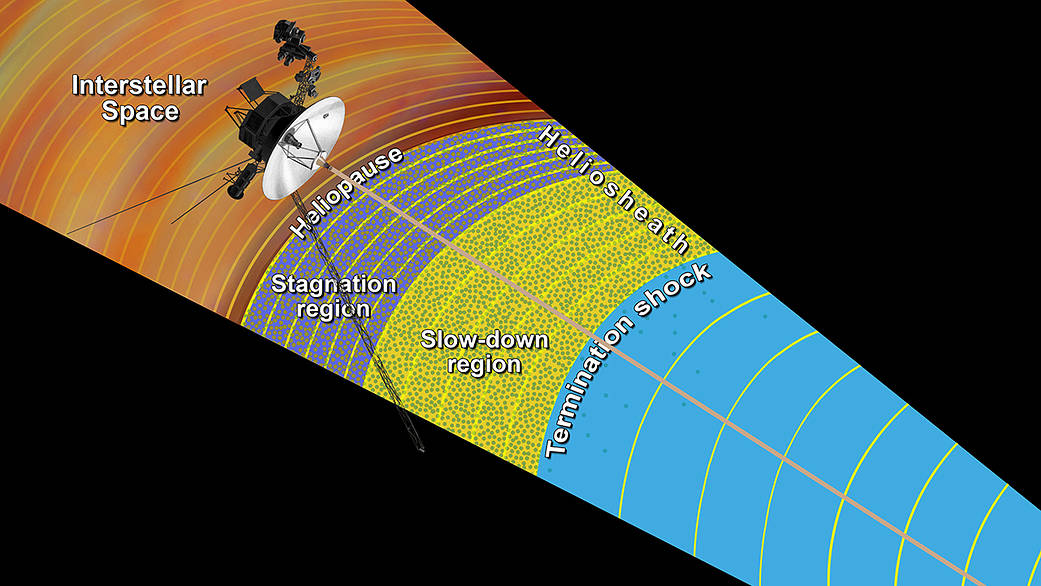
This artist’s concept shows the outer layers of our solar bubble, or heliosphere, and nearby interstellar space. NASA’s Voyager 1 is currently exploring a region of interstellar space, which is the space between stars that still feels charged particle and magnetic field influences from the heliosphere. The magnetic field lines (yellow arcs) appear to lie in the same general direction as the magnetic field lines emanating from our sun.
In the outer layers of the solar bubble — labeled here the “slow-down region” and the “stagnation region” — the magnetic field lines generated by our sun are piling up and intensifying. The green dots are the low-energy charged particles that are accelerated in the heliosphere’s turbulent outer layer.
The heliosheath, or the outer layer of our solar bubble, begins at the termination shock, where the wind of plasma that streams off the sun abruptly slows down from supersonic speeds and becomes turbulent. In the slow-down region, the solar wind slows down and stops moving outward in the stagnation region.
Previously, scientists thought there was a layer in our solar bubble called the depletion region, where these low-energy charged particles from the heliosheath disappeared. With new data, scientists now know that the depletion region was actually the beginning of interstellar space.
Image credit: NASA/JPL-Caltech



























